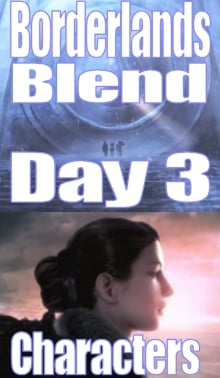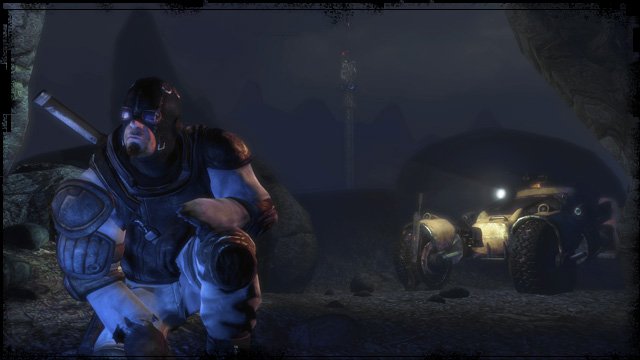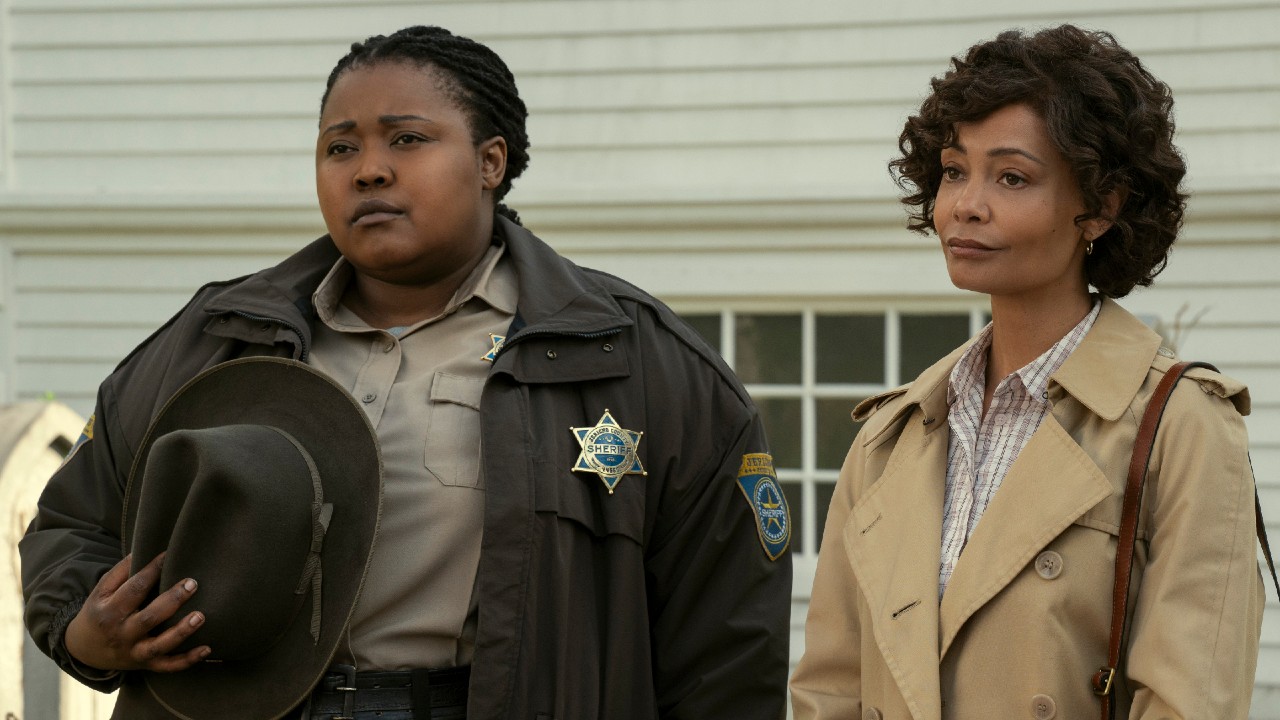Borderlands Blend - Day 3: Fallout 3 Character Comparison

You know how we roll here at Blend Games, comparisons, versus battles and everything else in between. So you knew it was coming sooner or later with a Fallout 3 comparison. Especially once we started talking about character development and RPG qualities surrounding the characters and their stories in Borderlands.
First off, Fallout 3 allows players to create a character based on a predisposed plot. It follows a widower (i.e., the player’s father) who ventures out of a fallout shelter (Vault 101), which causes the player’s created-character to follow in pursuit, and discover why the father went missing. From there it’s about crafting a story together from the open-ended elements offered within the giant world of Fallout 3.
For Borderlands it’s a bit different coming into the plot and unfolding the story. The entire scope of the way the story unfolds involve what’s happening on the planet and its inhabitants. Within the macrocosm of Borderlands’ main story resides the individual, branching narratives for each of the three main characters. In other words, this is one of those grand-fantastic adventures that could be a huge summer blockbuster. Anyway, each character is driven by a different goal, such as Mordecai’s quest for revenge against a man named Quinn. The only problem is that his quest is detoured when he finds out that Quinn has been killed by someone else, and Mordecai is now seeking out that man. Lilith, the only playable female, was turned into a Siren and has mystical abilities. She visits the planet looking for more of her own kind. Roland, the third playable character, is a former soldier and is also seeking out a bitter rival from a group called the Brigadiers.
Regarding character abilities and special skills, Fallout 3 offers gamers a lot of creative maneuverability when it comes to crafting a unique and diversely skilled character. Players will have seven aptitudes that can be upgraded throughout the course of the game, as well as a variety of special traits to signify the character’s trade skills or proficiencies. Players who want to graft a character who excels in diplomacy can do just that, which can afford them to bypass firefights by using speech. Fallout 3 also offers options for being a system hacker, or a character excelled in scavenging. The options for character development is truly vast in Fallout 3.
Borderlands is a little more traditional in the format of character development, considering that the characters already have pre-ordained classes that match their story. This, however, does not mean that players are restricted from upgrading or increasing the abilities, or changing the armor and equipment for the selected character. The real upside to Borderlands’ character classes resides in each character’s ability to contribute to the team. Mordecai receives extra bonuses for his sniping, while Roland can replenish the ammo supplies for the entire team. Lilith is probably the only character who can be used as both a support character and a stand-alone character, given her ability to slow-down enemies, and exercise other magical attacks/buffs.
Furthermore, Gearbox has added items and equipment that can further give advantages to characters who may have a disadvantage in a particular area. For instance, someone playing Lilith might have an augmentation that increases her sniping ability, plus a sniper rifle that does double damage. In essence, Lilith would then be a better sniper than Mordecai. Some of the items (or enhancers) within the game offer players all different kinds of stat modifiers, ranging from increased reload speeds to elemental damage, or equipment that increases a character’s speed or strength, etc. Basically, there’s nothing to complain about with Borderlands’ character development (or the lack thereof,) as Gearbox seems to have covered all the angles.
Now both games offer open-ended opportunities for players to take on quests or meet new characters, but Borderlands has a one-up on Fallout 3 due to the ability to have more than one NPC journey with you at a time. That’s not to mention that other party members can also be controlled via a drop-in-drop-out multiplayer feature. In turn, that is why the characters sort of have a limited basis of manipulation for some of their skills...so that there would be a greater balance for the multiplayer. But even with the equipment and items, players who want to purposefully create an imbalance (i.e., making one character superfluously powerful) can very well do so with the right mixture of equipment and weapons.
Your Daily Blend of Entertainment News
Both games have extensive character customization features, with the biggest difference between the two coming down to Fallout 3’s focus on a single-player experience, where-is Borderlands focuses more on a general multiplayer balance. But then again, Borderlands isn’t due out until 2009, so there’s still plenty of time for a new character to make an appearance, or for additional character functionality to be unveiled. Be sure, though, to stay tuned in with Blend Games for Day 4 of our Borderlands Blend, or you can visit the Blend Games Forum for further discussions on Borderlands and other games.



Staff Writer at CinemaBlend.

